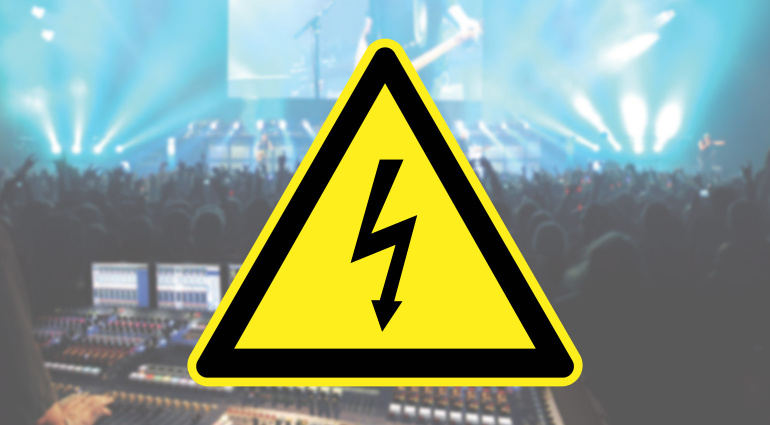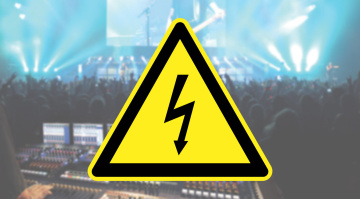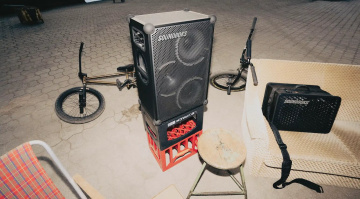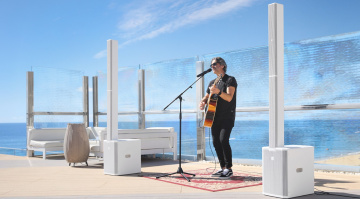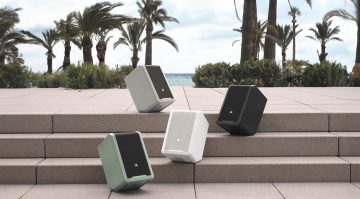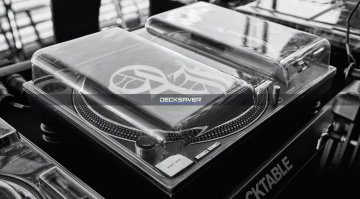Electrical Safety and Power Distribution for Live Sound
Learn about some of the basic electrical safety precautions in live sound environments.
We take a look at electrical safety and power distribution for live sound, with some essential tips you can apply to PA systems of any scale.
In this Article:
Electrical Safety and Power Distribution
The success of every concert or festival rides on the strength of its electrical distribution, a system of circuits, connectors, and power leads that ensures that sound is coming from the speakers. In live sound environments, the engineer’s primary concern is most often aspects such as speaker placement, signal flow, and gain structure.
However, electrical safety and power distribution are just as crucial, and mismanagement in these areas can endanger expensive equipment and, of course, the lives of concertgoers. Through an understanding of current and management of electrical signals, we can ensure a reliable power infrastructure for events that run safely with smooth audio performance.
With some fundamental knowledge of electrical circuits, careful preparation, and compliance with the relevant safety codes, we can avoid issues like poor earthing, ground loops, and circuit overloads, and the potential risks that arise as a result. Let’s look at some of the most important aspects of the electrical side of live sound.
Electrical Safety and Power Distribution: Electrical Power 101
In live sound environments, the equipment generally operates on alternating current or AC power. Depending on the region we’re in, the current and voltage standards differ, so in North America, we use 120V/60Hz while in Europe, the standard is 230V/50Hz. To run live sound gear, the power sources we use are the venue mains, portable generators, and dedicated power distribution units.
For determining the power requirements of a particular event and avoiding overloads, it’s helpful for engineers to understand core concepts like voltage (measured in volts), current (measured in amperes or amps), and resistance (measured in ohms).
To calculate power consumption (measured in watts), we use the following formula:
Power (W) = Voltage (V) × Current (A)
This allows us to add up the various loads from each individual device we use to make sure we don’t exceed the limitations of our circuitry and cables.
When it comes to electrical safety, it’s crucial to understand that exposure to current rather than voltage can be fatal. Even a current as low as 50 mA could create a lethal shock, particularly to your chest. For this reason, it’s essential to take safety measures by using adequate insulation, correct earthing, and residual current devices (RCD).
In addition, doing some research on the differences between single-phase (230V) and 3-phase power is important, as single-phase power will be enough for a small bar, but a stadium requires 3-phase for efficient load distribution and industrial-grade equipment.

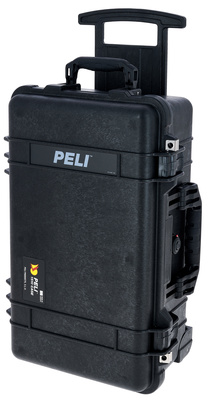
Electrical Safety and Power Distribution: Circuits, Loads, and Breakers
PA systems run on circuits with the protection of safety devices such as circuit breakers or fuses. If the flow of current is interrupted due to a fault or overload, these devices prevent damage, but they must be of the correct specification to do so. To avoid overheating, a 16A circuit, for instance, shouldn’t move above approximately 80% of its capacity (approx. 12–13A) for continuous loads.
For this reason, we always need to calculate the loads of outboard processors, lighting rigs, peripherals like laptops, and especially amplifiers, as they have high inrush currents. To balance the distribution of power, we spread loads over many separate circuits or phases and never daisy-chain high-power devices from one power outlet. It’s also worthwhile to use clearly labeled pro-grade power distribution units (PDUs) with metering and integrated breakers.
When planning the circuitry for an event, make sure you document everything, including cable runs, only use properly tested adapters, and never take shortcuts like taping breakers or bypassing safety devices. Incorrect phasing or overloading doesn’t only trip the power; it can destroy equipment like line arrays, amps, and consoles. With a well-executed plan, the stage becomes a safer place, and troubleshooting is a breeze.


Electrical Safety and Power Distribution: Live Sound Power Distribution Systems
Power distribution is a foundational aspect when approaching electrical circuitry in live sound environments. Using its high-capacity input, a distributor unit can divide 3-phase 400V power into several single-phase outlets (16A / 32A) for FOH or stage rigs. To meet these requirements, a pro PDU has voltage metering on each output, residual current devices, and circuit breakers.
Also, some pro distributors have surge protection, power factor correction, and even power sequencing, which can avoid surges or pops when done correctly. In addition, the cables and connectors you use must match the current ratings, with common standards like CEEform (16A, 32A, 63A), PowerCON, and IEC connectors.
Before use, take precautions by checking the connectors for loose pins or any sign of damage or overheating. Another important factor is cable gauge, as using the wrong spec can lead to a buildup of heat and or voltage drops. Thicker gauge cabling is useful for maintaining stable voltage for long runs, particularly for running amplifiers.
All temporary power systems must be compliant with the regulatory electrical standards in your region, such as BS 7909, IEC 60364, and NEC Article 520. Also, connecting the mains and generators on site should be done by a qualified electrician or experienced tech.

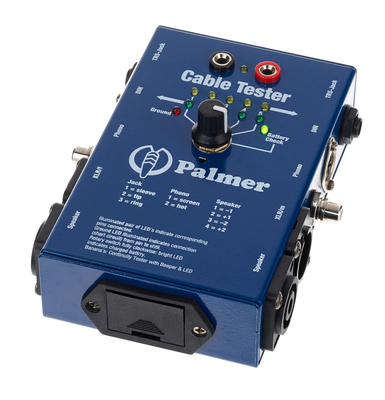
Electrical Safety and Power Distribution: Grounding, Isolation, and Noise Control
In live sound power circuits, grounding (or earthing) is a concept that is easily misunderstood. The purpose is to provide a way for any fault current present to reach earth safely, so remember: safety comes first, and audio second. The reason for this is that a metal equipment housing or mic body can become hazardous without proper grounding, not what AC/DC meant when they wrote High Voltage.
When there are different ground paths between pieces of audio gear, ground loops occur, which leads to hum. While lifting grounds can potentially remove hum, doing so can be very dangerous. Instead, the proper solution involves isolating audio grounds, rather than the electrical grounds.
By running all the FOH and stage gear on the same phase, we can reduce potential differences. Meanwhile, you can safely get rid of hum by using isolation transformers, balanced signal paths, and DI boxes with ground lift. At large outdoor festivals, it’s sometimes necessary to drive an earth rod into the ground, connected to the system earth. As a precaution, you can check continuity and resistance with an earth tester. Depending on the conditions, regulations generally require the rating of earth resistance to be under 1-5 ohms.

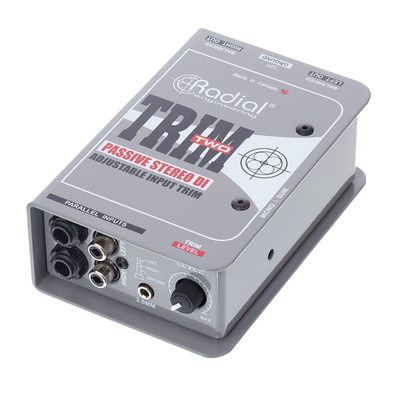
Electrical Safety and Power Distribution: Testing, Protection, and On-Site Safety Practices
Whether you rent or own the gear you use, it’s essential to check and power test it before any event. With cables, a simple visual inspection can reveal faults such as damaged connectors or exposed copper wiring. To verify the status of earth continuity, polarity, or insulation, you can use a multimeter or a PAT (Portable Appliance Test).
Wherever possible, install GFCIs (Ground Fault Circuit Interrupters) or RCDs (Residual Current Devices), which offer protection from getting electrocuted through the detection of leakage currents (usually above 30 mA). When dealing with power-sensitive gear like amplifiers, you can add power conditioners with surge protection as an extra measure.
It’s important to be methodical with your setup, labeling PDU outputs, cables, and circuits clearly, as well as keeping a log of breaker ratings, current draw, and cable runs. Keep your cable runs away from potential water exposure, foot traffic, and any sharp objects, and use cable ramps and gaffer tape to avoid creating tripping hazards.
When dealing with generators, you want to ensure that the frequency output is stable, the voltage is regulated, and there is proper grounding, and always use a transfer switch when connecting a generator to mains. Start the testing process with a no-load check, followed by adding circuits one by one, while keeping an eye on the current draw and voltage levels.
Finally, ensure the technical crew is properly trained for emergency shutdown measures. Everyone should know the locations of breakers, first aid stations, and fire extinguishers. Always put safety first: if anyone spots sparks, smoke, or gets a shock, immediately disconnect the power and do fault checking before powering up again.
More about Electrical Safety and Power Distribution:
- The Live Engineer’s Tool Box
- Thomann’s Guide to PA Systems
- Learn about Power Distribution for PA Systems
- Read more about Live Sound
*Note: This article contains advertising links that help us finance our site. Don’t worry: the price for you always stays the same! If you purchase something through these links, we receive a small commission. Thank you for your support!
 5,0 / 5,0 |
5,0 / 5,0 | 